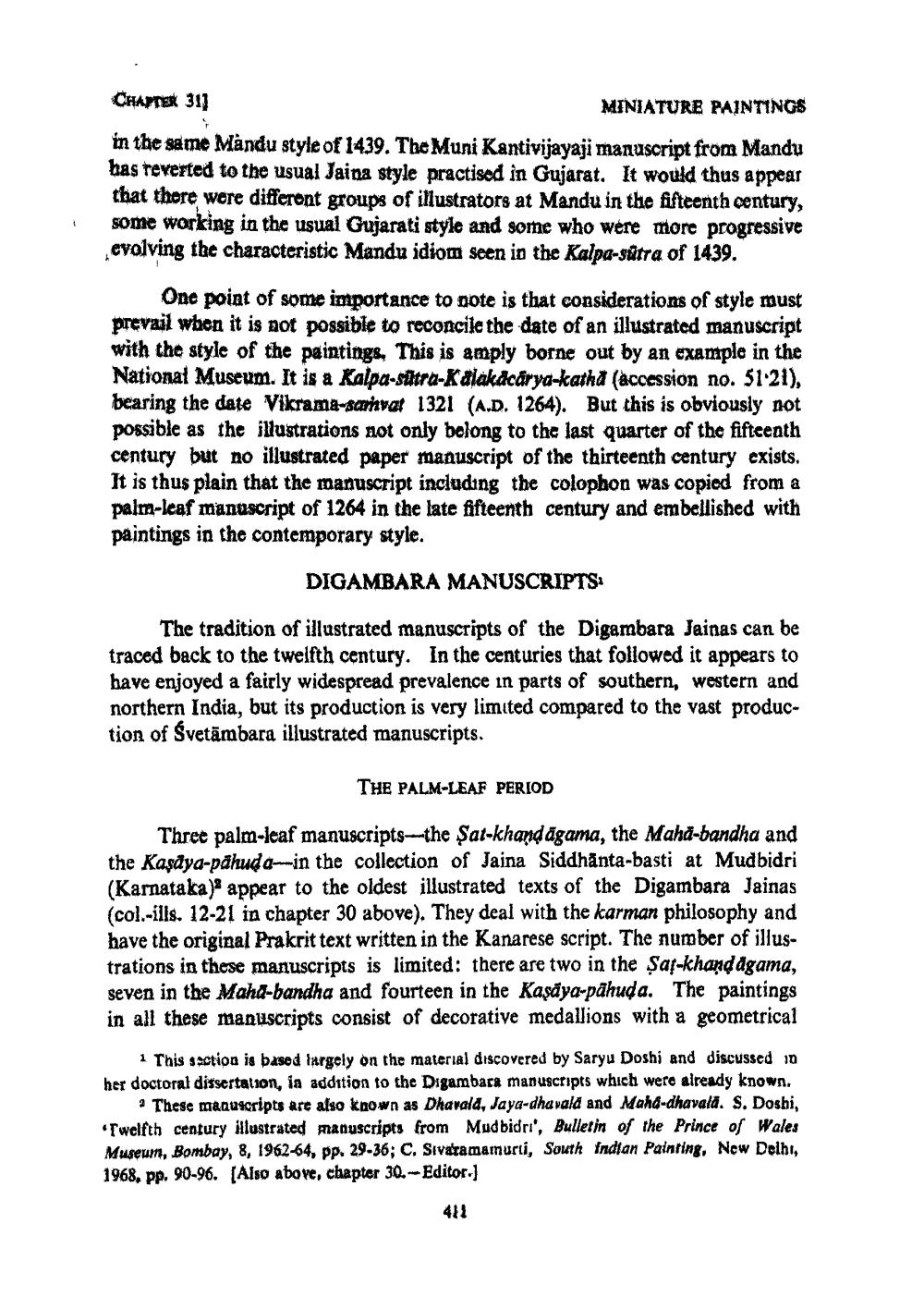________________
CHAPTEX 311
MINIATURE PAINTINGS
in the same Mandu style of 1439. The Muni Kantivijayaji manuscript from Mandu has reverted to the usual Jaina style practised in Gujarat. It would thus appear that there were different groups of illustrators at Mandu in the fifteenth century, some working in the usual Gujarati style and some who were more progressive evolving the characteristic Mandu idiom seen in the Kalpa-sútra of 1439.
One point of some importance to note is that considerations of style must prevail when it is not possible to reconcile the date of an illustrated manuscript with the style of the paintings. This is amply borne out by an example in the National Museum. It is a Kalpa-sitra-Kalakdcarya-katha (accession no. 51.21), bearing the date Vikrama-samvat 1321 (A.D. 1264). But this is obviously not possible as the illustrations not only belong to the last quarter of the fifteenth century but no illustrated paper manuscript of the thirteenth century exists. It is thus plain that the manuscript including the colophon was copied from a palm-leaf manuscript of 1264 in the late fifteenth century and embellished with paintings in the contemporary style.
DIGAMBARA MANUSCRIPTS.
The tradition of illustrated manuscripts of the Digambara Jainas can be traced back to the twelfth century. In the centuries that followed it appears to have enjoyed a fairly widespread prevalence in parts of southern, western and northern India, but its production is very limited compared to the vast production of Svetāmbara illustrated manuscripts.
THE PALM-LEAF PERIOD
Three palm-leaf manuscripts--the Sat-khand ägama, the Maha-bandha and the Kasdya-pähuda in the collection of Jaina Siddhanta-basti at Mudbidri (Karnataka) appear to the oldest illustrated texts of the Digambara Jainas (col.-ills. 12-21 in chapter 30 above). They deal with the karman philosophy and have the original Prakrit text written in the Kanarese script. The number of illustrations in these manuscripts is limited: there are two in the Saf-khandägama, seven in the Maha-bandha and fourteen in the Kaşaya-pähuda. The paintings in all these manuscripts consist of decorative medallions with a geometrical
1 This section is based largely on the material discovered by Saryu Doshi and discussed in her doctoral dissertation, ia addition to the Digambara manuscripts which were already known.
3 These manuscripts are also known as Dhavald, Jaya-dhavald and Maha-dhavald. S. Dosbi, Twelfth century illustrated manuscripts from Mudbidri', Bulletin of the Prince of Wales Museum, Bombay, 8, 1962-64, pp. 29-36; C. Sivaramamurti, South fndtan Painting, New Delhi, 1968. pp. 90-96. (Also above, chapter 30.-Editor.)




